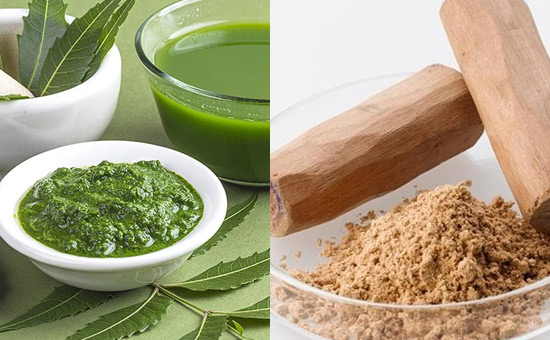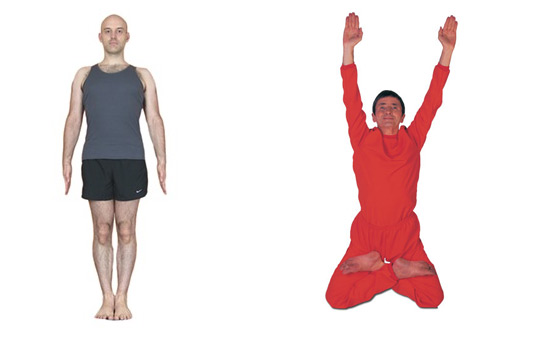- This article helps
you understand structure of knee joint and symptoms of a problem. Next it tells
of how Yog and Ayurvedic therapy can help.
When we stand, the full weight of our body falls on
our knee joint. This load increases more when we walk, climb stairs or squat.
Therefore, we can say that our knees work for our body like two wheels and
carry significant part of human body weight. Consequently, it is an important
part of our body that helps in our daily routine.
However, if we reflect on our lifestyle, most of us
will realize that we badly treat our knees, ignore them and pay attention only when
they begin to hurt.
Let’s understand the structure and function of the knee joint, how to pay attention to our knees & keep them healthy. Remember, your happiness depends on the health of your knee joint. Those in doubt should speak to a person who is suffering from knew pain.
Here are answers to some FAQ’s (frequently asked questions) on knee pain.
1. How to cure a knee joint that is already damaged?
2. Is there any alternative to knee surgery?
3. What are non-invasive methods for knee joint
pain?
4. Is there any therapy available in Ayurveda &
Yoga for knee joint pain?
5. How to prevent early degeneration or damage of
knee joint?
We take care of our vehicles, for personal
transport, by way of regular servicing to enjoy trouble free movement. When
damaged we repair promptly. The knee has to be dealt with similarly. Ayurveda
emphasizes first on prevention and later on Care.
"Swasthasya
swasthya rakshanam , Aturasya Vikar
prashamanam".
To prevent & take care firstly let's understand the basic structure of knee joint.
Formation of the knee joint
The knee joint is Synovial joint made up of four bones
having synovial fluid & its sac bursae in between them which facilities
movements. The bones of knees are the femur (Thigh Bone), the Tibia (Shin
Bone-Lower leg), Fibula (Outer side lower leg - Shin Bone) and Patella (Knee
Cap In Front).
Other structures of knee are Nerves for sensation,
Artery & Veins for blood circulation and Muscles for support &
flexibility, present around knees are the
quadriceps and hamstrings.
Bones can stabilize their
place with the support of Tendons, ligaments & Cartilage.
Tendons connect knee bones to
the muscles & help knee movement.
Ligaments bring Stability & firmness, essential for a range of movements of knee joint.
Cartilage acts as a shock
absorber.
Synovial fluid is viscous fluid that helps in lubrication of joint and indirectly prevents friction between two bones. It supplies oxygen, nutrients and removes carbon dioxide and metabolic wastes of the joint.
The average
volume of synovial fluid is up to 3.5 ml. The synovial fluid is used for
diagnosis of various joint diseases.
Muscles
Quadriceps are a group of four muscles present in
front of the thigh. They help in straightening the knee by bringing a bent knee
to a straightened position.
Hamstrings are a group of three muscles on the back
of the thigh. They provide the opposite motion by bending the knee from a
straightened position.
In Ayurveda, Nidan Parivarjan is the first line of treatment of any disease. It means eliminate the causes to cure illness.
What are the causes for knee joint disorders?
Primary causes - Imbalanced diet & lifestyle,
Injury & trauma, Inflammation, Aging etc.
Proximate causes - Imbalance
in trisdosha (Vata, Pitta & Kapha) followed by vitiation in the rest of
tissues.
Injury - Ligament sprains,
Fractures, Meniscus tears.
Inflammation - Lateral/medial ligament
or tendons of knee, Bursitis, Rheumatoid arthritis (Fever, Inflammation &
toxins (Ama) formation).
Osteoarthritis - Old
age or deficiency of calcium or vitamin D creates brittleness in the bones
which increases Vata dosha & chances of fractures.
Obesity - Consistent strain
& unilateral deviation of body weight damages cartilage.
Stress/Insomnia - Lack of absorption of
calcium & necessary vitamins from the diet.
Excessive use of joints -
vigorous jumping/walking.
Symptoms are many namely Pain, Accumulation
of toxins or Ama creates inflammation which reflects in swelling, redness, and warmth
on the affected knee, Stiffness & cracking sounds at the knee joint during
movements, Restriction in the range of motion of knee joint, Change in gait or
walking due to abnormality inside cartilage and Bowlegged i.e. shape of leg
seems like bow shaped due to progressive cartilage damage.
Diagnosis
- X-ray knee joint - reduced space or injuries, fractures etc.
- MRI (magnetic resonance imaging), CT scan.
- Menisci tear - Arthroscopy, Arthrography.
- Synovial fluid analysis.
- Serum Calcium & Vitamin D & B12 level.
Ayurved & Yog Treatment for Knee Joints
problem
Before getting into the solution note that the remedy
to fractures, severe pain, and post-operative cases should be evaluated under
expert guidance. If young people have knee pain and swelling without any
history of injury please rule out other pathological disorders like liver
cirrhosis etc.
According to Ayurveda there is an increase in Vata
dosha & decreas in Kapha Pitta Dosha.
It is called Sandhivata
(Arthritis/Osteoarthritis).
However, in the inflammatory stage, there is Kapha
& Pitta obstructed at the knee joint due to vitiated Vata Dosha. This type
of joint pain comes under Aaam Vata
(Rheumatoid Arthritis). Thus treatment depends upon proper evaluation by an
expert & your body constitution.
How do I get instant relief from knee pain?
Give maximum rest to the knee, use knee caps while
walking (gives stability), do not lift weight, elevation of the knee joint
helps reduce swelling and pain and include Ghee (Clarified butter) in the diet.
Further your diet must change to include Proteins
and Vitamin C, the combination helps absorption of iron articles. For example rice
& lentils dal or spinach dal by adding drops of lemon juice or with ghee
helps for joint health.
 Lepa (herbal paste) to be applied to painful knee area.
Lepa (herbal paste) to be applied to painful knee area.
AYURVEDA THERAPY
1. Local Oil Absorption Ayurveda therapy to induce lubrication - Janubasti (Janu means
Knee & Basti means stay - In this treatment herbal medicated warm oil or
decoction retained on knee for 30-40 minutes) & Sandhi
bandh (Knee joint dressing with soaked with warm medicated oil). Both
are invasive & effective therapies that
significantly reduce the pain on knew joints.
This treatment should be taken not only when you
have knee pain. If taken continuously it prevents future knee damage & strengthens
bones, ligaments & meniscus.
2. Application of Lepa (herbal paste) to the painful knee area for about 15 to
20 minutes. Lepa is made from Chandan lepa/Nimbadi leaf paste.
3. Abhyanga
(whole body massage with warm
medicated oil) or Local
Pottali (A warm massage with bolus of medicated rice/herbs and Medicated
milk/oil) over knee joint.
4. Patra pinda
sveda is an herbal steam fomentation with castor plants namely eranda, nirgundi or neem leaf.
5. Medicine - Rasnadi
kwath, Dashmul arishta, Sinhanad Guggula.
YOGA THERAPY
Yoga is useful in knee pain because of its holistic
approach. It balances physical & mental attitude towards illness & makes
healing faster. Yoga strengthens quadriceps & hamstring muscles, cartilage
& ligaments through various postures. It
improves blood circulation by eliminating toxins because of the disciplined way
of movements at knee joint & surrounded parts.
Practically speaking knee joint patients have lot of restricted movements like unable to sit on the
ground, severe pain, swelling at the joint & difficulty in sitting in cross
leg posture, etc. Therefore, yoga teachers have to teach asana with modifications
& as per individual capacity.
Suggest avoid all poses that create pressure on the
knee joint like Vajrasan, Ushtrasana, Dhanurasana, Pawanmuktasana
etc in acute & severe knee pain.
Yoga for healthy knees as prevention
For warm up & joint mobilization start yoga with
Sukshma vyayam - Knee rotation/Knee
lock & open movement. Attention must be given on knee alignment while
performing asana & to be done as per the capacity of an individual.
 Tadasana
& Parvatasana
Tadasana
& Parvatasana
Recommended Asanas (to be
done as per individual capacity)
1. Uttanpadasana
- lying on back raise one by one leg, maintain it at a 90-degree angle.
2. Tadasana
& Parvatasana (Mountain posture) - It helps to stretch spine &
hence helps nerves strengthening. This indirectly improves neuromuscular
connection in context with knee pain. It can be done in standing or sitting
posture.
3. Virasana
& Setubandhasana helps in working on pelvic, hip & leg muscle
synchronization. It improves blood & the synovial fluid circulation.
4. Gomukhasana
(Cow Face Pose) helps in increasing flexibility of quadriceps &
hamstrings.
5. Padmasana
(Lotus Pose) - It opens up knee and muscles.
6. Cycling and running - works on the quadriceps,
especially the rectus femoris and vastus lateralis muscles.
7. Pranayama
& Meditation are very important to enhance mental strength & cellular
level oxygen consumption.
To
summarize walk, stretch & do yoga & follow Ayurveda principles as per
your capacity. Your decision can transform your life.
Author is a Graduate in Ayurveda from Mumbai University and a Master in Yogashastra. She has been practicing Ayurved and Yog at Kaivalyadhama Mumbai for many years.
To read all
articles by Author
Also
read
1 Yoga
Poses to ease arthritis